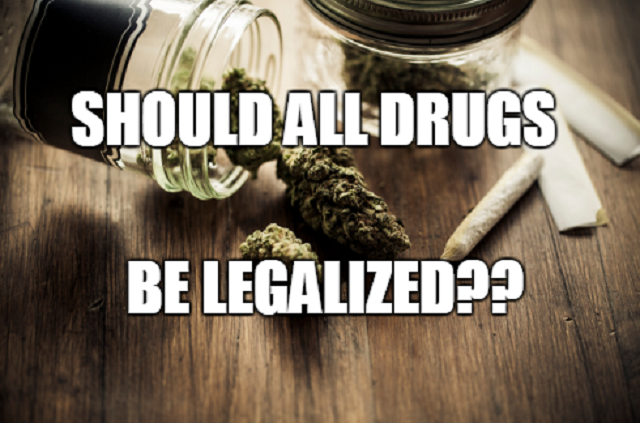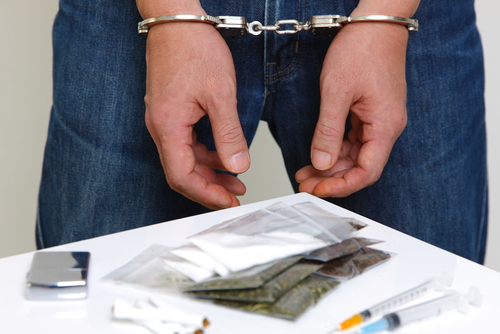Lesson 9: Stimulant Use Disorder
Attention

Read this article on the Pros and Cons about Drug Legalization
Learning Outcomes
Upon completion of this lesson's material, students will be able
- Understand stimulants and be able to state risks and benefits of their use
- Understand why non-prescription use of stimulants was criminalized and state the risks and benefits of legalization
- Be able to describe various treatment approaches for Stimulant Use Disorder
Teaching
ABOUT STIMULANTS
Stimulants are substances that both cause the release of adrenaline, exciting, alerting and empowering us, and cause the release of dopamine in the limbic system giving us a sense of pleasure and well-being. The main health risks are cardiovascular---stroke and heart attack. But moderate use may, as with other substances, be relatively safe.
Cocaine legal in this country until Harrison Narcotics Act which continued to allow it to be prescribed by physicians (but not for treatment of cocaine addiction) but eliminated over the counter sales. Cocaine is still an ingredient in Coca Cola which is the largest importer of cocaine in this country: the cocaine is like O'Douls (a non-alcoholic beer), it's been de-cocainized and is just there for the flavoring. Cocaine is not as popular as it used to be. Main medical use of cocaine currently is as a local anesthetic for the mouth, nose and throat during surgery.
Amphetamines and Methamphetamine. Methamphetamine and amphetamine are both synthesized from ephedrine, a naturally occurring substance in the ephedra plant which is sometimes used to get high itself. Amphetamine first synthesized around WW I to aid the war effort by increasing soldiers' alertness. Medical uses for weight loss, treating narcolepsy, treating ADHD. Methamphetamine works the same way as amphetamine but is considered more powerful because it gets to the brain quicker. These substances may cause decrease in saliva production resulting in tooth decay ("meth mouth"). May produce same mental health issues as cocaine and the treatment issues are similar. While cocaine use has decreased, methamphetamine use has increased especially in the South and West U.S.
Cocaine and methamphetamine are both dopamine reuptake inhibitors but meth is more potent because it actually causes the neuron to release more dopamine into the synapse. The proliferation of dopamine in the synapse is the reason for the tremendous high associated with cocaine and methamphetamine.
TREATMENT
The treatment of both of Cocaine and Amphetamines and Methamphetamines is similar.
One treatment issue is withdrawal-induced depression which may be helped by anti-depressant medication and cognitive behavioral therapy. Acceptance and Commitment Therapy may also help with dealing with the depression that may co-occur with Stimulant Use Disorder and may have actually preceded use. Treatment of SUD issues is the same as for other substances with emphasis on dealing with cravings, relapse prevention and lifestyle changes to support abstinence. It is not unusual for cocaine users to have a sense of grandiosity that makes it difficult to establish a therapeutic relationship. Occasionally may cause cocaine psychosis characterized by paranoia and aggressive behavior. Usually this will resolve by itself as the cocaine wears off. Cocaine users often report that the pleasure of use is like nothing else and one therapeutic goal is to help the user live in a world where moderation is seen as the key to happiness.
CRIMINALIZATION OF SUBSTANCES

The main impetus behind criminalization of substances in the 20th Century was supposed medical and social harm due to use. But most substances do not cause medical or social problems when used in moderation. Criminalization politically has worked because users have been portrayed as dangerous and have been stigmatized as members of despised minorities.
The main risk with substances is addiction and arguably the number of addicts would increase if substances were more easily obtainable. But there is increasing evidence that the proportion of people who become addicted to any substance is largely determined by genetic and neurophysiological issues while the large majority of the population will not become addicted.
For example, 50% of the alcohol that is bought in this country is bought by 10% of the population, the same proportion that meets the criteria for AUD. The main benefit of decriminalization, especially if money currently used on law enforcement and incarceration were shifted to treatment, might be fewer lives wasted behind bars and more lives rescued to be productive members of society. The main risk is that there would be an increase in social chaos if we became a culture whose main form of recreation were intoxication. But this did not seem to happen in the 19th Century when all substances were legal in this country and you could buy cocaine from the Sears Catalogue.
LEGAL SPEED
Health benefits in moderation for cardiovascular system and for prevention of Type II diabetes. Main health risk is cardiovascular when used excessively (> 3 to 5 cups or 150 to 200mg/day). There is no Caffeine Use Disorder because it is not considered addictive because people by-in-large do not develop preoccupation or compulsive use. However, excessive use may produce Caffeine Intoxication primarily characterized by anxiety and raised blood pressure and heart rate. Treatment is to just let it wear off. Also people may experience Caffeine Withdrawal when advised to quit or reduce intake by their physician. Increasing concern about kids especially overdosing on energy drinks which often contain not only caffeine but other stimulants such as ginseng and guarana.
Assessment
Lesson 9 Quiz
- State the risks and benefits associated with up to three stimulants discussed in this Lesson (10 points for each up to 30 points)
- What were the reasons stated in the Lesson for the criminalization of non-medical cocaine and amphetamine/methamphetamine use? List and describe up to three reasons for 10 points each (up to 30 points)
- What is the treatment described in the Lesson for Cocaine Use Disorder. List and describe the elements (20 points) and also special problems associated with Cocaine (20 points).
Lesson 9 Discussion
State three points that support decriminalization of all substances and three points that oppose it. State your position on this issue and defend it by citing at least one source, not already cited in this Lesson, that you have found through your own research on the Net.
Remember, you mist post TWICE in EVERY discussion board. Your first post should address the topic of the discussion (like the one above) and your second post must be a reply to ANOTHER students' post...your reply should be MORE than just a "I agree!" or "Very cool!" It should be "substantive" by expanding on the students post, asking a questions, adding your own thoughts to what they have said, etc.